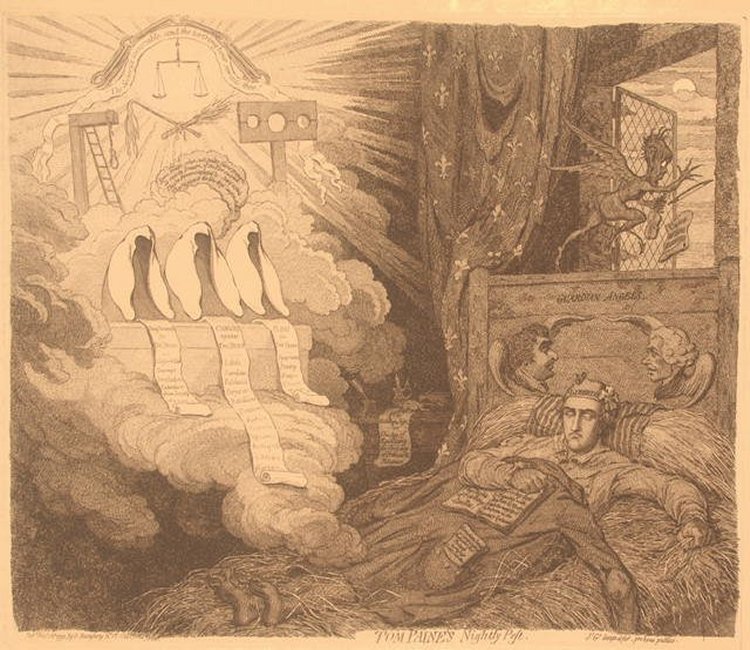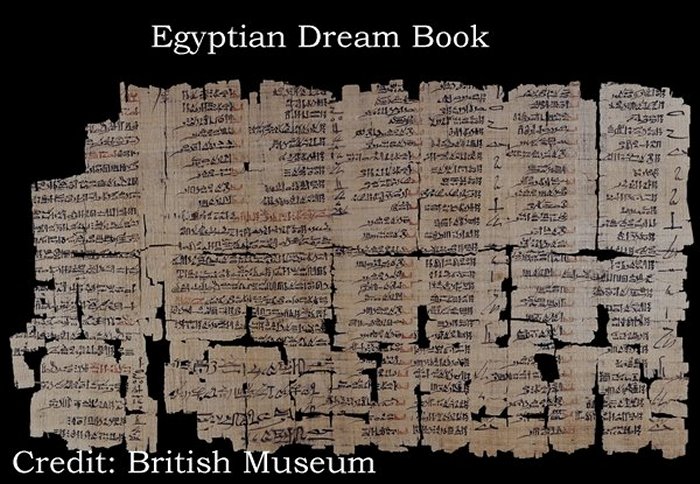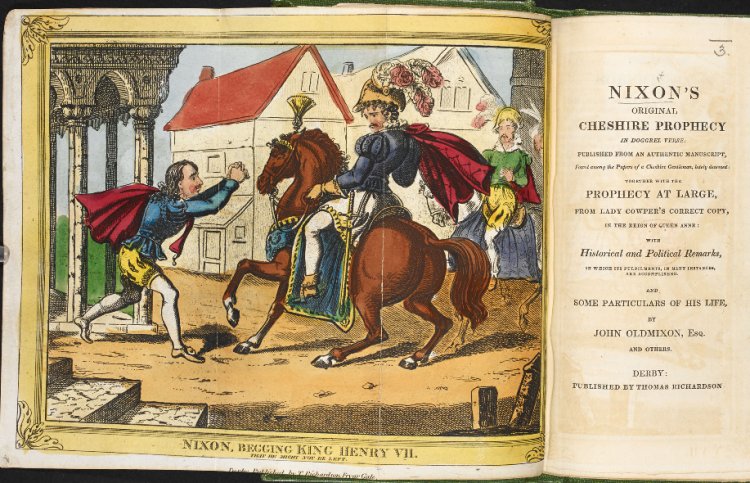The Egyptian Dream Book Reveals Ancient Predictions Of The Future
Ellen Lloyd - AncientPages.com - The Egyptian dream is, alongside the Babylonian dream, one of the most widespread ways of interpreting dreams. The belief that dreams can foretell the future has its roots in the distant past. Ancient people believed in precognitive dreams.
Dreams had a powerful role in the past. Image source
These dreams predicted the future through a sixth sense – a way of accessing future information unrelated to any existing knowledge acquired through normal means.
Like many people today, ancient Egyptians believed that certain signs or events seen in dreams revealed unpredictable information about the future.
Dreams played a powerful role in the past.
Thousands of years ago, ancient Egyptians used the messages in their dreams to cure illnesses, make important State decisions, and even decide where to build a temple or when to wage a battle.
Dreams were considered to be divine predictions of the future. They were messages from the gods that could foretell impending disasters or, conversely, of good fortune; therefore, understanding the significance of one's dreams was an important part of the culture.
The ancient Egyptian Dream Book is a hieratic papyrus that probably dates to the early reign of Ramesses II (1279-1213 BC). The papyrus currently kept at the British Museum lists several dreams and interpretations.
The Dream Book was unearthed in the Deir el-Medina cemetery near the Valley of the Kings. According to the British Museum, "it is uncertain who the original owner was, but it passed into the hands of the scribe Qeniherkhepshef; on the other side of the papyrus, the scribe copied a poem about the Battle of Kadesh, which took place in the reign of Ramesses II (1279-1213 BC)."
The Dream Book was part of an archive, including a wide variety of literary, magical, and documentary material. The book was passed to Khaemamen, Qeniherkhepshef's wife's second husband, and then to his son Amennakht (both added their name to the papyrus).
It contains 108 dreams, which describe 78 activities and emotions related to daily life. On each page of the papyrus, a vertical column of hieratic signs begins: 'If a man sees himself in a dream'; each horizontal line describes a dream, followed by the diagnosis 'good' or 'bad,' and then the interpretation.
' The text first lists good dreams, and then bad ones; the word 'bad' is written in red, 'the color of ill omen.'
For example, 'if a man sees himself in a dream looking out of a window, good; it means the hearing of his cry.' Or, 'if a man sees himself in a dream with his bed catching fire, bad; it means driving away his wife.
Dreaming of, for example, a deep well - meant prison. A shining moon was associated with forgiveness and a large cat symbolized a bumper crop. A mirror indicated a second wife.
Other examples are: If a man sees himself in a dream dead – Good. It means long life."
"If a man sees himself in a dream, his bed catching fire- Bad. It means driving away his wife."
"If a man sees himself in a dream drinking warm beer- Bad. It means suffering."
"If a man sees himself in a dream looking out of a window- Good. It means the gods hear his cries."
"If a man sees himself falling off a wall- Good. It means the issuing of a favorable edict."
Park's New Egyptian Dream Book. Credits: British Library.uk
"If a man sees himself looking after monkeys- Bad. It means change awaits."
In ancient Egypt, priests acted as dream interpreters. Dream interpretations were often based on whether a person was a follower of Horus, one of the oldest and most significant deities in ancient Egyptian religion, or Seth, the god of the desert, storms, disorder, violence, and foreigners in ancient Egyptian religion.
People believed that dreams served as a window to the other side. Living people could see the activities of the deceased through dreams.
The problem was that a dreaming person had no control over the situation. It was feared that the dreamer could be accessible to malicious spirits, opening a disturbing portal to unwanted beings in the afterlife.
It hasn't changed in modern times. People have been fascinated by dreams for thousands of years, and cultures worldwide have developed their own traditions for interpreting dreams.
Written by Ellen Lloyd – AncientPages.com
Updated on October 7, 2022
Copyright © AncientPages.com. All rights reserved. This material may not be published, broadcast, rewritten or redistributed in whole or part without the express written permission of AncientPages.com.
Expand for referencesreferences:
N. Lewis, The Interpretation of Dreams & Portents in Antiquity
Pat Remler, Egyptian Mythology, A to Z
More From Ancient Pages
-
 On This Day In History: Heidelberg University Established – On Oct 19, 1386
News | Oct 19, 2016
On This Day In History: Heidelberg University Established – On Oct 19, 1386
News | Oct 19, 2016 -
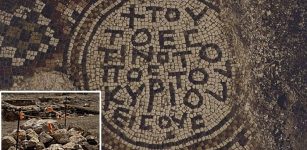 The 6th Century Byzantine Church Hidden Within Khirbet Tinshemet’s Woods – Discovered
Archaeology | Oct 2, 2024
The 6th Century Byzantine Church Hidden Within Khirbet Tinshemet’s Woods – Discovered
Archaeology | Oct 2, 2024 -
 New Evidence Of Human Habitation At Panga ya Saidi Cave, Kenya That Dates Back 78,000 Years
Archaeology | May 11, 2018
New Evidence Of Human Habitation At Panga ya Saidi Cave, Kenya That Dates Back 78,000 Years
Archaeology | May 11, 2018 -
 People Who Carry Neanderthal Gene Variants Have Greater Pain Sensitivity
DNA | Oct 11, 2023
People Who Carry Neanderthal Gene Variants Have Greater Pain Sensitivity
DNA | Oct 11, 2023 -
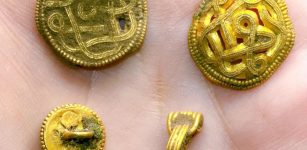 Spectacular Ancient Gold Treasure Found In Denmark – Was It A Gift To Please Angry Gods?
Archaeology | Sep 24, 2018
Spectacular Ancient Gold Treasure Found In Denmark – Was It A Gift To Please Angry Gods?
Archaeology | Sep 24, 2018 -
 Mysterious Disappearance Of King Aegeus Of Athens After His Wedding
Featured Stories | Aug 1, 2022
Mysterious Disappearance Of King Aegeus Of Athens After His Wedding
Featured Stories | Aug 1, 2022 -
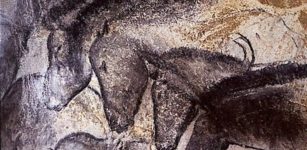 Prehistoric Artwork In Chauvet-Pont d’Arc Cave 10000 Years Older Than Previously Thought
Archaeology | Apr 12, 2016
Prehistoric Artwork In Chauvet-Pont d’Arc Cave 10000 Years Older Than Previously Thought
Archaeology | Apr 12, 2016 -
 How Did Sargon Become The Most Powerful Ruler Of Mesopotamia?
Featured Stories | Apr 3, 2020
How Did Sargon Become The Most Powerful Ruler Of Mesopotamia?
Featured Stories | Apr 3, 2020 -
 Oldest Scandinavian DNA Found In Ancient Chewing Gum
Archaeology | May 15, 2019
Oldest Scandinavian DNA Found In Ancient Chewing Gum
Archaeology | May 15, 2019 -
 Ravana: Ten-Headed And Multi-Armed Demon King Of Lanka And Chief Antagonist In Epic Ramayana
Featured Stories | Oct 8, 2019
Ravana: Ten-Headed And Multi-Armed Demon King Of Lanka And Chief Antagonist In Epic Ramayana
Featured Stories | Oct 8, 2019 -
 What Happened To The Ancient Tribe That Entered A Secret Underground World And Never Came Back?
Ancient and Unexplained Mysteries Library - Premium Content Preview | Feb 1, 2021
What Happened To The Ancient Tribe That Entered A Secret Underground World And Never Came Back?
Ancient and Unexplained Mysteries Library - Premium Content Preview | Feb 1, 2021 -
 Yggdrasil: Eternal And Sacred Tree Of Life In Norse Mythology
Featured Stories | Sep 22, 2016
Yggdrasil: Eternal And Sacred Tree Of Life In Norse Mythology
Featured Stories | Sep 22, 2016 -
 Statue Of Unknown Mythical Beast With Four Wings Discovered
Archaeology | Sep 1, 2022
Statue Of Unknown Mythical Beast With Four Wings Discovered
Archaeology | Sep 1, 2022 -
 Pazzi Conspiracy – Failed Murder Attempt On Lorenzo de’ Medici Made Him Even More Powerful And Threw Renaissance Florence Into Chaos
Featured Stories | Jun 14, 2024
Pazzi Conspiracy – Failed Murder Attempt On Lorenzo de’ Medici Made Him Even More Powerful And Threw Renaissance Florence Into Chaos
Featured Stories | Jun 14, 2024 -
 Oldest Golden Jewel In The Caucasus Unearthed In Azerbaijan
Archaeology | Dec 25, 2017
Oldest Golden Jewel In The Caucasus Unearthed In Azerbaijan
Archaeology | Dec 25, 2017 -
 Ancient Village Of Zalipie Where Flowers Are Painted On All Houses
Ancient Traditions And Customs | May 29, 2019
Ancient Village Of Zalipie Where Flowers Are Painted On All Houses
Ancient Traditions And Customs | May 29, 2019 -
 When And Why Negev Highlands’ Agricultural Settlement Was Abandoned? – Researchers Have Answers
Archaeology | Jul 28, 2020
When And Why Negev Highlands’ Agricultural Settlement Was Abandoned? – Researchers Have Answers
Archaeology | Jul 28, 2020 -
 Legendary Beowulf Fighting Dragon Grendel In Heroic Poem Written In Anglo-Saxon England
Featured Stories | Aug 14, 2022
Legendary Beowulf Fighting Dragon Grendel In Heroic Poem Written In Anglo-Saxon England
Featured Stories | Aug 14, 2022 -
 Pilot Mountain Is Home To A Mysterious Underground Civilization – Cherokee Legend Tells
Featured Stories | Apr 30, 2021
Pilot Mountain Is Home To A Mysterious Underground Civilization – Cherokee Legend Tells
Featured Stories | Apr 30, 2021 -
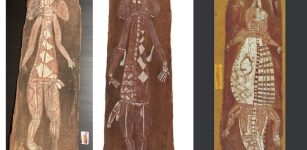 Solving The Bark Painting Mystery In Australia
Archaeology | Feb 23, 2023
Solving The Bark Painting Mystery In Australia
Archaeology | Feb 23, 2023

